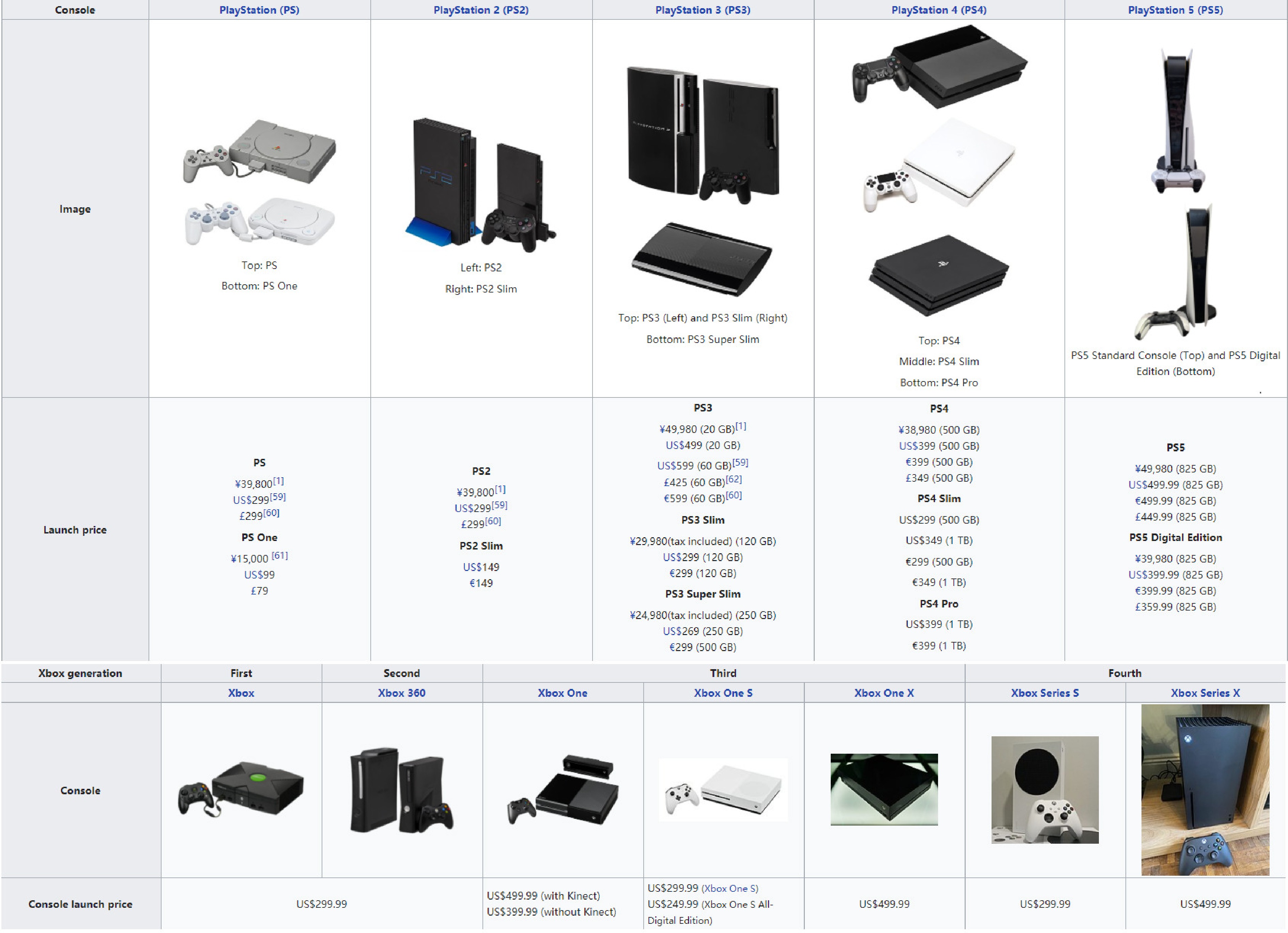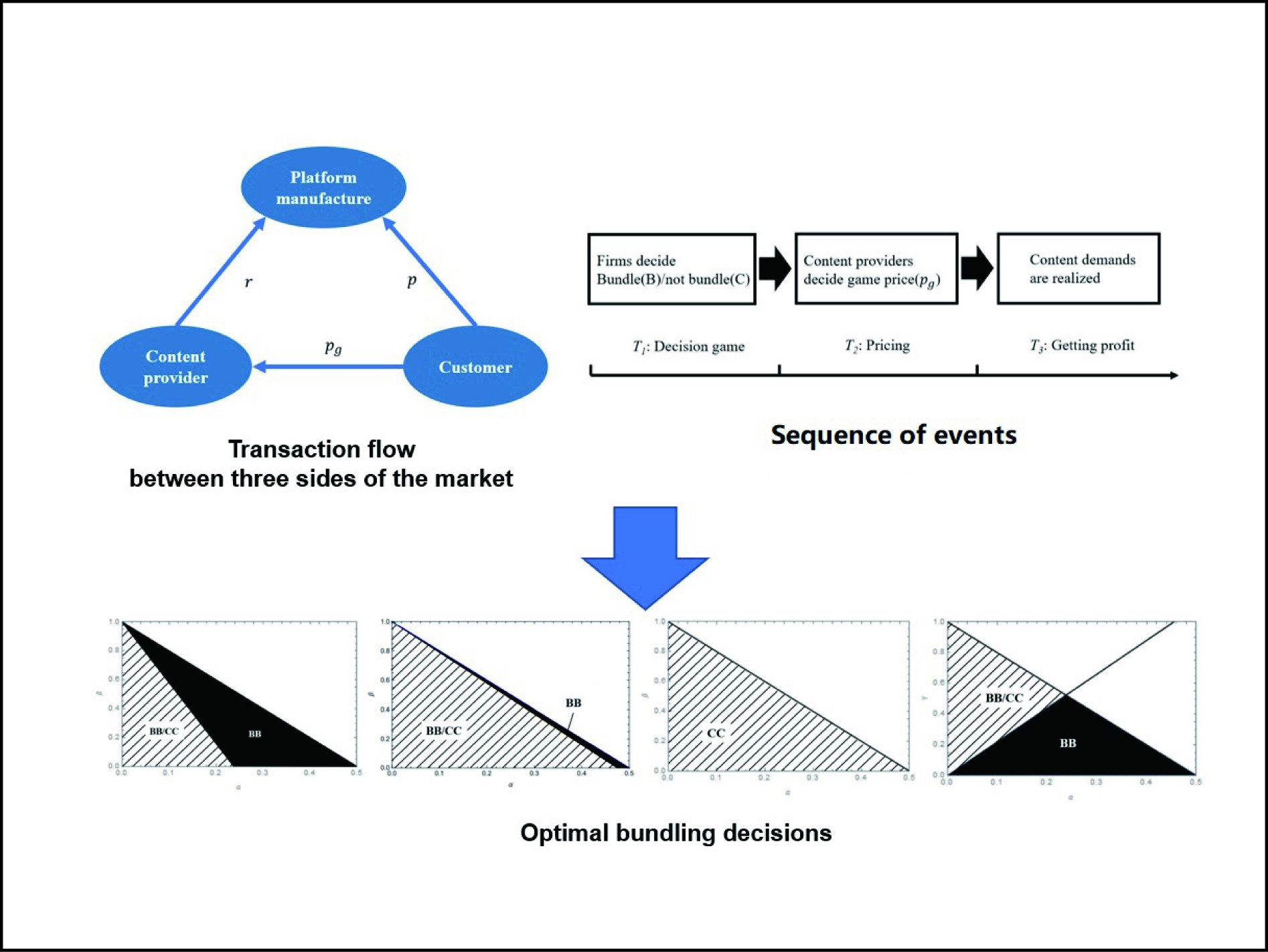
ISSN 0253-2778
CN 34-1054/N
As an emerging platform, hardware/software platforms differ from traditional retail platforms because they require consumers to spend a certain amount of money accessing them. Therefore, an installation base is created. Considering the game console as an example, only consumers with an installation base can purchase a third-party game product on the platform. Otherwise, consumers will be unable to play games. It is generally believed that the existence of an installed base will benefit third-party content providers, and at the same time, it will not benefit platform manufacturers. Therefore, it can be observed that game platforms often bundle new consoles with third-party content, forcing consumers with installed bases to purchase a new console. Thus, building a model to study the impact of the installation based on the bundling strategy of the video game platform and to analyze the optimal pricing and profit under different bundling strategies is meaningful. Our study analyzed the impact of the installed base under different bundling strategies and found that the installed base dose not always have a positive impact on platform manufacturers. The study also analyzed the equilibrium of competing platform manufacturers and found that, under certain conditions, both the bundling-bundling strategy and the unbundling-unbundling strategy may exist as equilibrium.

The installed base does not always provide a positive impact on platform manufacturers.
| [1] |
Chen X. The development trend and practical innovation of smart cities under the integration of new technologies. Frontiers of Engineering Management, 2019, 6 (4): 485–502. DOI: 10.1007/s42524-019-0057-9
|
| [2] |
Bhargava H K. Retailer-driven product bundling in a distribution channel. Marketing Science, 2012, 31 (6): 1014–1021. DOI: 10.1287/mksc.1120.0725
|
| [3] |
Bhargava. Mixed bundling of two independently valued goods. Management Science, 2013, 59 (9): 2170–2185. DOI: 10.1287/mnsc.1120.1663
|
| [4] |
Geng X J, Stinchcombe M B, Whinston A B. Bundling information goods of decreasing value. Management Science, 2005, 51 (4): 662–667. DOI: 10.1287/mnsc.1040.0344
|
| [5] |
Wu S Y, Hitt L M, Chen P Y, et al. Customized bundle pricing for information goods: a nonlinear mixed-integer programming approach. Management Science, 2008, 54 (3): 608–622. DOI: 10.1287/mnsc.1070.0812
|
| [6] |
Hitt L M, Chen P Y. Bundling with customer self-selection: a simple approach to bundling low-marginal-cost goods. Management Science, 2005, 51 (10): 1481–1493. DOI: 10.1287/mnsc.1050.0403
|
| [7] |
Basu A, Vitharana P. Impact of customer knowledge heterogeneity on bundling strategy. Marketing Science, 2009, 28 (4): 792–801. DOI: 10.1287/mksc.1080.0445
|
| [8] |
Prasad A, Venkatesh R, Mahajan V. Optimal bundling of technological products with network externality. Operations Research:Management Science, 2010, 56 (12): 2224–2236. DOI: https://doi.org/10.1287/mnsc.1100.1259
|
| [9] |
Cao Q N, Stecke K E, Zhang J. The impact of limited supply on a firm’s bundling strategy. Production and Operations Management, 2015, 24 (12): 1931–1944. DOI: 10.1111/poms.12388
|
| [10] |
Zhang Z, Nan G F, Li M Q, et al. Duopoly pricing strategy for information products with premium service: free product or bundling? Journal of Management Information Systems, 2016, 33 (1): 260–295. DOI: 10.1080/07421222.2016.1172457
|
| [11] |
Sun K. Bundling, vertical differentiation, and platform competition. Review of Network Economics, 2018, 17 (1): 1–23. DOI: 10.1515/rne-2017-0046
|
| [12] |
Gao M. Platform pricing in mixed two-sided markets. International Economic Review, 2018, 59 (3): 1103–1129. DOI: 10.1111/iere.12298
|
| [13] |
Caillaud B, Jullien B. Chicken & egg: competition among intermediation service providers. The RAND Journal of Economics, 2003, 34 (2): 309–328. DOI: 10.2307/1593720
|
| [14] |
Parker G G, van Alstyne M W. Two-sided network effects: a theory of information product design. Management Science, 2005, 51 (10): 1449–1592. DOI: 10.1287/mnsc.1050.0400
|
| [15] |
Hałaburda H, Yehezkel Y. Platform competition under asymmetric information. American Economic Journal: Microeconomics, 2013, 5 (3): 22–68. DOI: 10.1257/mic.5.3.22
|
| [16] |
Amelio A, Jullien B. Tying and freebies in two-sided markets. International Journal of Industrial Organization, 2012, 30 (5): 436–446. DOI: 10.1016/j.ijindorg.2012.03.002
|
| [17] |
Rochet J C, Tirole J. Platform competition in two-sided markets. Journal of the European Economic Association, 2003, 1 (4): 990–1029. DOI: 10.1162/154247603322493212
|
| [18] |
Chen M H, Rennhoff A D, Serfes K. Bundling, à la carte pricing and vertical bargaining in a two-sided model. Information Economics and Policy, 2016, 35: 30–44. DOI: 10.1016/j.infoecopol.2016.03.001
|
| [19] |
Choi J P. Tying in two-sided markets with multi-homing. Journal of Industrial Economics, 2010, 58 (3): 607–626. DOI: 10.1111/j.1467-6451.2010.00426.x
|
| [20] |
Chao Y, Derdenger T. Mixed bundling in two-sided markets in the presence of installed base effects. Management Science, 2013, 59 (8): 1904–1926. DOI: 10.1287/mnsc.1120.1688
|
| [21] |
Lin X G, Zhou Y W, Xie W, et al. Pricing and product-bundling strategies for E-commerce platforms with competition. European Journal of Operational Research, 2020, 283 (3): 1026–1039. DOI: 10.1016/j.ejor.2019.11.066
|
| [22] |
Boudreau K J, Hagiu A. Platform rules: Multi-sided platforms as regulators. In: Gawer A editor, Platforms, Markets and Innovation. Cheltenham, UK: Edward Elgar Publishing, 2009: 163-191.
|
| [23] |
Parker G G, van Alstyne M W. Internetwork externalities and free information goods. In: Proceedings of the 2nd ACM Conference on Electronic Commerce. New York: Association for Computing Machinery, 2000: 107-116.
|
| [24] |
Hagiu A. Pricing and commitment by two-sided platforms. The RAND Journal of Economics, 2006, 37 (3): 720–737. DOI: 10.1111/j.1756-2171.2006.tb00039.x
|
| [25] |
Hauptman O. Platform leadership: how Intel, Microsoft, and Cisco drive industry innovation. Innovation, 2003, 5 (1): 91–94. DOI: 10.5172/impp.2003.5.1.91
|
| [26] |
Gawer A, Henderson R. Platform owner entry and innovation in complementary markets: evidence from Intel. Journal of Economics and Management Strategy, 2007, 16 (1): 1–34. DOI: https://doi.org/10.1111/j.1530-9134.2007.00130.x
|
| [27] |
Zhu F, Iansiti M. Entry into platform-based markets. Strategic Management Journal, 2012, 33 (1): 88–106. DOI: 10.1002/smj.941
|
| [28] |
Anderson E G, Parker G G, Tan B. Platform performance investment in the presence of network externalities. Information Systems Research, 2014, 25 (1): 152–172. DOI: 10.1287/isre.2013.0505
|
| [29] |
Tan B, Anderson E G, Parker G G. Platform pricing and investment to drive third-party value creation in two-sided networks. Information Systems Research, 2020, 31 (1): 217–239. DOI: https://doi.org/10.1287/isre.2019.0882
|
| [30] |
Geng X J, Tan Y L, Wei L. How add‐on pricing interacts with distribution contracts. Production and Operations Management, 2018, 27 (4): 605–623. DOI: 10.1111/poms.12831
|
| [31] |
Geng X J, Shulman J D. How costs and heterogeneous consumer price sensitivity interact with add‐on pricing. Production and Operations Management, 2015, 24 (12): 1870–1882. DOI: 10.1111/poms.12400
|
| i | Platform manufacturer i, i=1,2 |
| j | Refers to scenarios including BB, BC, CC |
| g | Content provider |
| vg | Valuation of customers for the content |
| αi | Fraction of the customers who only have the installed base of firm i |
| β | Fraction of the customers who do not have installed base |
| p | Price of the platform |
| pg | Price of the content |
| r | Royalty per content sold |
| Ug | The utility that consumers obtain from purchasing the content |
| Πij | The profits in j scenario for firm i |
| Πgj | The profits in j scenario for content provider |